Q
How many miles can Mazda CX-5 travel?
The Mazda CX-5 is a beloved SUV here in Malaysia, and it's got a solid reputation for toughness. With proper maintenance and sensible driving, these things can easily hit 200,000 to 250,000 miles (that's roughly 320,000 to 400,000 kilometers) – maybe even more. Of course, how long it lasts really depends on how you drive it, how often you service it, and let's not forget Malaysia's unique road conditions and climate.
Mazda's Skyactiv tech is a big part of why the engine and gearbox are so efficient and reliable. Staying on top of regular oil changes, filter replacements, and brake fluid flushes will definitely help keep it going strong for longer. Now, Malaysia's hot and humid weather can be a bit rough on rubber parts and electronics, so it's a good idea to check things like chassis bushings and door seals regularly – those are the bits that tend to wear first.
One thing that really speaks to the CX-5's long-term dependability is how well they hold their value on the used car market. You'll still see plenty of CX-5s over 10 years old running around in great mechanical shape. If you're planning to keep yours for the long haul, sticking to the official service schedule and using genuine or approved parts is key. Not only will that keep it performing at its best, but it'll also make sure you get a better price when it's time to sell.
Special Disclaimer: This content is published by users and does not represent the views or position of PCauto.
Related Q&A
Q
Is the 2024 Mazda CX-5 petrol or diesel better?
The 2024 Mazda CX-5 is available in both gasoline and diesel variants in the Malaysian market. The optimal choice depends primarily on your driving needs. The gasoline model features 2.0L and 2.5L Skyactiv-G naturally aspirated engines, delivering smooth power output and lower maintenance costs. It excels for urban commuting and daily family use, particularly benefiting drivers who frequently make short trips. The diesel variant features a 2.2L Skyactiv-D turbocharged engine, delivering greater torque and superior fuel efficiency. It excels for long-distance driving or frequent cargo transport, though diesel vehicles typically carry higher purchase and maintenance costs. Given Malaysia's relatively low diesel prices, the diesel model may prove more economical over extended use for high-mileage drivers. Both models come standard with Mazda's i-Activsense safety suite, and their interior quality and handling performance are consistent. Note that diesel vehicles demand higher fuel quality standards; regular maintenance at authorized service centers is recommended. If you prioritize a quiet, comfortable driving experience, the gasoline model is preferable. For those focused on fuel efficiency and responsive power delivery, the diesel variant is worth considering.
Q
How many cc is the 2024 Mazda CX-5?
The 2024 Mazda CX-5 hits the Malaysian market with two petrol engine choices: the 2.0-litre and 2.5-litre Skyactiv-G naturally aspirated units. The 2.0L checks in at 1998cc, while the 2.5L comes in at 2488cc. Both powerplants leverage Mazda's clever Skyactiv tech, which strikes a nice balance between fuel efficiency and power delivery—ideal for both Malaysian city commutes and longer highway hauls.
Now, naturally aspirated engines are known for their linear power delivery at higher revs and generally lower maintenance costs, though they might not quite match turbocharged engines for low-end torque. But Mazda's done a solid job with the tuning here, so the CX-5 still feels plenty responsive in day-to-day driving.
For Malaysian buyers, the 2.0-litre variant makes a lot of sense if you're mostly zipping around the city. On the other hand, if you often carry extra passengers, load up the boot, or just want that little bit more grunt when you need it, the 2.5-litre is the way to go. Factor in the CX-5's reputation for sharp handling and that eye-catching Kodo design language, and it's definitely a strong contender in the mid-size SUV segment.
Q
How many miles can a 2024 Mazda CX-5 go on a full tank of gas?
The 2024 Mazda CX-5's range depends on its fuel tank capacity and real-world fuel efficiency. Here in Malaysia, the CX-5 typically comes with a 58-liter fuel tank. Official figures peg its combined fuel consumption at around 7.2 to 7.8 liters per 100 kilometers, so you're looking at a projected range of roughly 740 to 800 kilometers on a full tank. Of course, your actual mileage will vary based on driving habits, road conditions, and how much you're carrying.
Under the hood, the CX-5's Skyactiv-G engine and i-Stop idle-stop tech work together to keep fuel use in check. Keep a steady pace on the highway, and you might even stretch that range a bit further. For Malaysian drivers, though, our hot weather and stop-start city traffic could nudge fuel consumption up slightly. A little regular maintenance and keeping an eye on tire pressure should help you get the best out of it.
In the same segment, rivals like the Honda CR-V or Toyota RAV4 offer pretty similar range figures. At the end of the day, it really comes down to personal preference and what you need from your SUV.
Q
Which 2024 Mazda CX-5 has the best gas mileage?
The 2024 Mazda CX-5 offers multiple powertrain options in the Malaysian market, with the front-wheel-drive variant featuring the 2.0-liter Skyactiv-G naturally aspirated engine delivering the best fuel economy. Official data indicates a combined fuel consumption of approximately 6.5-6.8 liters per 100 kilometers, striking a balance suitable for both daily urban commuting and long-distance driving. This engine pairs with an optimized 6-speed automatic transmission, leveraging Mazda's exclusive Skyactiv technology to achieve efficient combustion and low friction losses while preserving the brand's signature driving pleasure. For further fuel efficiency gains, maintain proper tire pressure, avoid aggressive acceleration and braking, and use the air conditioning system judiciously. It's worth noting that the hybrid variant is not currently available in Malaysia. However, the conventional gasoline-powered CX-5 still delivers competitive fuel economy among its SUV peers, particularly offering more stable consumption in congested traffic compared to some turbocharged models. For Malaysian buyers, opting for the front-wheel-drive (FWD) version not only reduces fuel costs but also lowers the initial purchase price, as FWD models are typically more affordable than their all wheel-drive (AWD) counterparts.
Q
How many litres does a 2024 Mazda CX-5 use per 100 km?
The 2024 Mazda CX-5's fuel efficiency in the Malaysian market varies depending on model configuration and driving conditions. According to official data, its combined fuel consumption ranges approximately between 6.5 and 7.5 liters per 100 kilometers. with specific figures depending on the engine type and drivetrain configuration. For instance, the front-wheel-drive version with a 2.0-liter naturally aspirated engine tends to be more fuel-efficient, while models equipped with a 2.5-liter engine or all-wheel drive may exhibit slightly higher consumption. Driving conditions in Malaysia, such as urban congestion or highway cruising, also influence real-world fuel economy. Owners are advised to assess their vehicle's performance based on personal driving habits and road conditions. Additionally, the Mazda CX-5 incorporates Skyactiv technology, optimizing fuel efficiency and power output while maintaining an excellent driving experience. This makes it a solid choice for Malaysian consumers seeking a balance between fuel economy and performance. Routine maintenance and details like tire pressure also affect fuel consumption, and regular servicing helps keep the vehicle in optimal condition.
Q
How big is the fuel tank on a 2024 Mazda CX-5?
The 2024 Mazda CX-5 comes with a 58-liter fuel tank, a design that strikes a good balance between meeting daily commuting needs and longer road trips, all while keeping fuel efficiency in mind. For Malaysian drivers, this 58-liter tank typically translates to a range of around 600 to 700 kilometers in urban settings, though your actual mileage will vary depending on driving style and traffic conditions. Hit the highway, and you can expect to stretch that range even further.
A big part of that efficiency story is Mazda's Skyactiv technology, which optimizes fuel burn to help you go that extra mile. Good news too for local owners: Malaysia's fuel quality plays nice with the CX-5's engine. We recommend sticking with RON 95 or higher octane fuel to ensure the engine performs at its peak. If you're someone who racks up the highway klicks regularly, a quick periodic check of the fuel tank and system is a smart move to keep everything running smoothly.
In the Malaysian market, the CX-5 has built a solid rep for reliability and driving enjoyment. Its 58-liter fuel tank sits comfortably in the upper-middle range for SUVs in its class, making it more than capable of handling the demands of most drivers.
Q
Where is the 2024 CX-5 made?
The 2024 Mazda CX-5 is primarily built at the Hofu plant in Hiroshima, Japan – one of Mazda's core global manufacturing hubs, renowned for its top-tier craftsmanship and strict quality control. Now, for the Malaysian market, some CX-5 variants might roll out of the Rayong, Thailand facility. That factory handles supply for right-hand-drive markets across Southeast Asia, ensuring the vehicles are properly localized and delivered efficiently.
Malaysian buyers can actually check the origin using the VIN (Vehicle Identification Number): a "J" at the start means it's from Japan, while an "M" points to Thailand. Importantly, both production sites stick to Mazda's unified quality benchmarks. However, the Thai-built models might have subtle tweaks, maybe in rear-seat amenities or suspension tuning, to better suit typical Southeast Asian road conditions.
It's worth noting Mazda's been pushing a "single model, multiple production locations" strategy lately. This helps optimize costs and allows quicker responses to regional demands. For instance, the CX-5 is also assembled in places like Russia and Mexico. But for Southeast Asian specs, Japan and Thailand remain the main sources.
As always, I'd recommend chatting with your local Mazda dealer before buying. They can confirm the specific production batch and trim details of the CX-5 you're eyeing, making sure you get the exact setup that fits your needs best.
Q
Is there a recall on Mazda CX-5 2024?
As of now, Mazda Malaysia hasn't issued any official recall notices for the 2024 CX-5. Owners can head to the "Recall Check" section on Mazda Malaysia's official website and punch in their Vehicle Identification Number (VIN) to confirm the latest status. If there are any safety-related updates down the line, Mazda typically gets in touch with owners through their registered dealerships to arrange free inspections and repairs. We recommend Malaysian CX-5 owners keep a regular eye on their vehicle's condition and stay tuned to official channels—think the Road Transport Department (JPJ) or announcements from authorized Mazda service centers. Recalls are almost always about safety first, like potential part glitches or software tweaks, and they don't reflect poorly on the overall quality of the vehicle. Proactively responding to a recall ensures your ride stays up to the highest safety standards. The CX-5 remains a popular SUV choice, and its safety tech like the i-Activsense system has always earned high marks. Owners should also consider regular preventive check-ups at authorized service centers to keep their CX-5 performing at its best.
Q
What type of oil does a 2024 Mazda CX-5 take?
For the 2024 Mazda CX-5 in Malaysia, Mazda recommends using 0W-20 fully synthetic engine oil that meets their factory specifications. This low-viscosity oil does a solid job boosting fuel efficiency and cutting down on engine wear during cold starts – perfect for daily driving in our tropical climate. If you're pushing the car hard with spirited driving or it's got some serious miles on the clock, stepping up to 5W-30 might be a good call for better high-temperature protection. But honestly, your best bet is to stick to what the owner's manual or Mazda's authorized service centers suggest first.
One thing to keep in mind: Malaysia's hot and humid conditions can really make oil break down faster. So even with fully synthetic stuff, you've gotta stay strict on oil changes – every 10,000 kilometers or 6 months, whichever comes first. When picking oil, make sure it has the latest certifications like API SP/GF-6 or ACEA C5. Those oils pack more anti-wear additives, which is crucial for protecting all the精密 (jingmì - precise) moving parts in the Skyactiv engine.
If you're mostly stuck in city traffic with a lot of stop-and-go, it's worth looking for oil with good anti-carbon buildup properties. That helps keep the engine clean inside for the long haul. And hey, do yourself a favor – buy your oil through Mazda's official after-sales channels. That way, you know you're getting the real deal, formulated for Malaysia's roads and weather. Using sketchy, unbranded oils? Yeah, that could end up voiding your warranty, and nobody wants that headache.
Q
What is the fuel consumption per 100km of the Mazda CX-5 2024?
The 2024 Mazda CX-5's fuel economy in the Malaysian market varies depending on the powertrain and driving conditions. The 2.0-liter naturally aspirated engine variant returns a combined fuel consumption of approximately 6.5 to 7.2 liters per 100 kilometers, while the 2.5-liter version is slightly thirstier, coming in at around 7.4 to 8.1 liters per 100 kilometers. Real-world figures, however, can fluctuate based on factors like heavy city traffic, air-conditioning usage, and individual driving styles.
Mazda's Skyactiv technology plays a key role here, optimizing engine efficiency and incorporating lightweight materials to boost fuel economy without sacrificing that signature Mazda driving fun – a nice fit for Malaysia's diverse road conditions. For those looking to squeeze out a bit more from each tank, keeping your tires properly inflated, avoiding aggressive acceleration and hard braking, and making smart use of the stop-start system are all solid tips.
All in all, the CX-5 remains a popular SUV choice, striking a pretty good balance between fuel efficiency and performance. It's a practical pick for family drivers who want something that doesn't guzzle gas but still delivers when you need it.
Latest Q&A
Q
How reliable is a 2019 Porsche Macan?
The 2019 Porsche Macan delivers solid reliability, thanks to its proven 2.0T or 3.0T engines that offer consistent power delivery. The PDK dual-clutch transmission is another strong point—it’s both durable and buttery-smooth.
Porsche’s sporty DNA shines through in the Macan’s chassis tuning and all-wheel-drive system, yet it doesn’t compromise everyday comfort. Owner feedback suggests that sticking to the factory maintenance schedule keeps most examples running trouble-free, though be prepared for higher upkeep costs (as with any luxury vehicle).
Its strong resale value speaks volumes about its reputation for dependability. If you’re after driving thrills without sacrificing SUV practicality, the 2019 Macan is a compelling pick. Just be sure to get a pre-purchase inspection and verify full service history—it’ll pay off in the long run.
Q
How much is a 2019 Porsche worth?
The value of a 2019 Porsche depends on the model, mileage, condition, and specs. Take the popular Cayenne, for example—used ones typically go for between RM300k to RM500k. A 911 Carrera might range from RM500k to RM800k, while an entry-level 718 Boxster or Cayman could be around RM250k to RM400k. For luxury sedans like the Panamera, expect prices between RM350k to RM600k, but always check the actual condition and option list.
Porsches hold their value well, especially limited editions or high-performance GT models, but maintenance costs and service history play a big role in resale pricing. If you're buying, stick to official certified pre-owned channels or get a professional inspection. Always verify warranty transfers and repair records.
Pro tip: Compare listings on local used-car platforms and check recent sales data—market demand and inventory fluctuations affect pricing. Also, factory options (like sport packages or premium audio) can boost resale value, while accident history or multiple owners might slash the price by 10-20%.
Q
Does the 2019 Macan have a good sound system?
The 2019 Porsche Macan delivers an impressive audio performance, particularly with the optional Bose® Surround Sound System or the top-tier Burmester® High-End Surround Sound System—both offering an immersive listening experience.
The Bose® setup packs 14 speakers with 665 watts of total power, delivering crisp audio and punchy bass perfect for pop and electronic music. Meanwhile, the Burmester® system steps it up with 16 speakers and 1,000 watts, creating a wider soundstage and superior detail reproduction—ideal for classical or high-resolution tracks.
Both systems integrate seamlessly with Porsche’s standard Communication Management (PCM), supporting Apple CarPlay and multiple audio sources. If sound quality is a priority, be sure to specify your audio preference at purchase—the base model only comes with a standard speaker setup.
For the best performance, play lossless files via USB or high-quality Bluetooth codecs, and keep the system firmware updated for optimal operation.
Q
What is the resale value of a 2019 Macan?
The resale value of a 2019 Porsche Macan depends on factors like condition, mileage, specs, and service history. Current used prices hover between RM250k to RM350k, with higher trims commanding premium prices. As Porsche's entry SUV, the Macan holds its value better than most rivals thanks to brand prestige and sporty DNA – especially models optioned with Sport Chrono or full leather interiors fetching stronger money.
Pro tip: Get a pre-sale inspection and organize your maintenance paperwork – this really helps maximize resale. Macans move quickly in our local used market, with 3-5 year-old examples being the sweet spot when depreciation levels off. If you're upgrading, consider Porsche Approved Certified pre-owned – you'll pay a slight premium over private sales, but the extended warranty and factory refurbishment save headaches down the road.
Q
Is a 2019 Porsche Macan a good car?
The 2019 Porsche Macan is a well-rounded luxury SUV that stays true to Porsche's performance DNA while delivering everyday practicality. It comes with your choice of a peppy 2.0T or more powerful 3.0T engine, paired with Porsche's brilliant 7-speed PDK transmission that shifts like butter. The chassis strikes that sweet spot between sporty handling and comfortable cruising - perfect for both city commutes and weekend backroad blasts.
Inside, you'll find Porsche's typical top-notch craftsmanship with a standard 10.9-inch touchscreen featuring Apple CarPlay. Just don't expect limo-like rear legroom. These things hold their value surprisingly well, though maintenance will cost you more than your average SUV - but then again, you get Porsche's excellent service network.
Among its competitors, the Macan stands out for its driver engagement. If you want more grunt, step up to the Macan S or GTS. One pro tip: if you're shopping used, pay special attention to the PDK's condition and inspect the suspension components. Always better to go through Porsche's certified pre-owned program for that extended warranty peace of mind.
View MoreRelated News
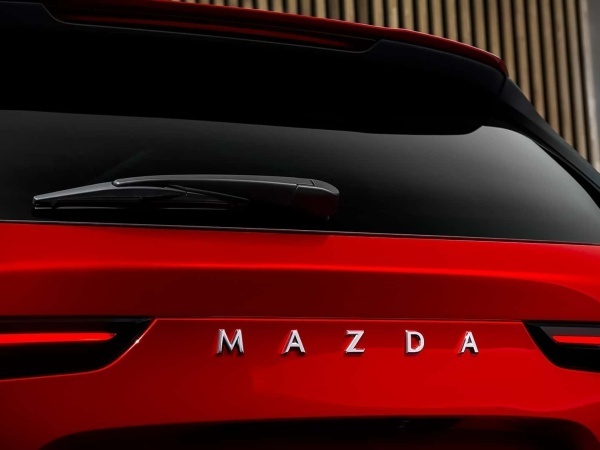
The third-generation Mazda CX-5 debuts in Europe, equipped with the largest central control screen in Mazda's history
MichaelJul 11, 2025
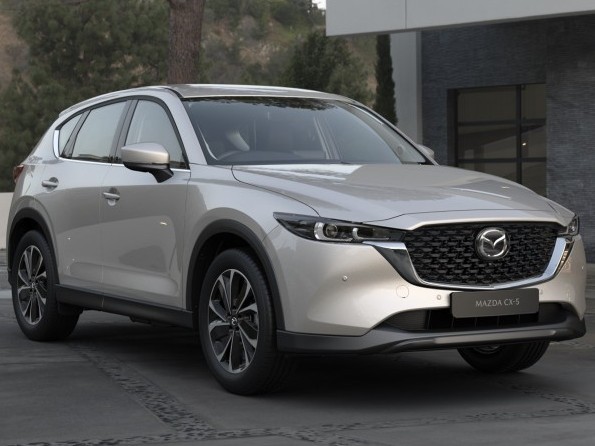
Stunning Looks, Premium Feels: Mazda CX-5's Dual Charm in Detail
AshleyApr 23, 2025
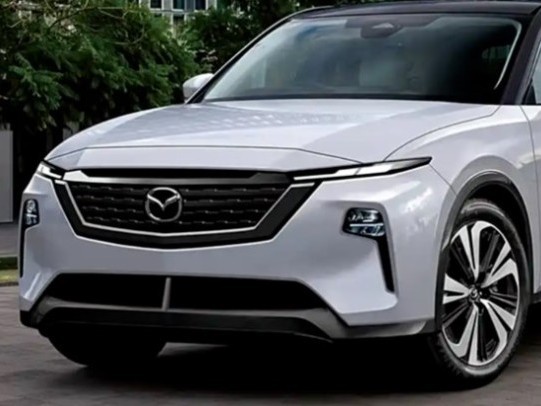
Mazda CX-5 showcased at Thailand Motor Expo 2024, new generation could be released at the Tokyo Auto Show next year
Kevin WongDec 4, 2024
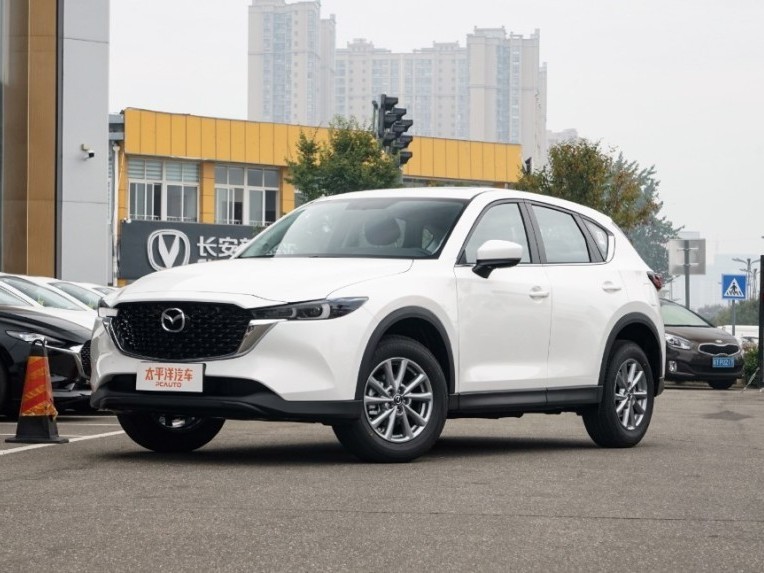
The third generation Mazda CX-5 is expected to debut in 2025! It may be equipped with self-developed hybrid technology!
RobertNov 25, 2024
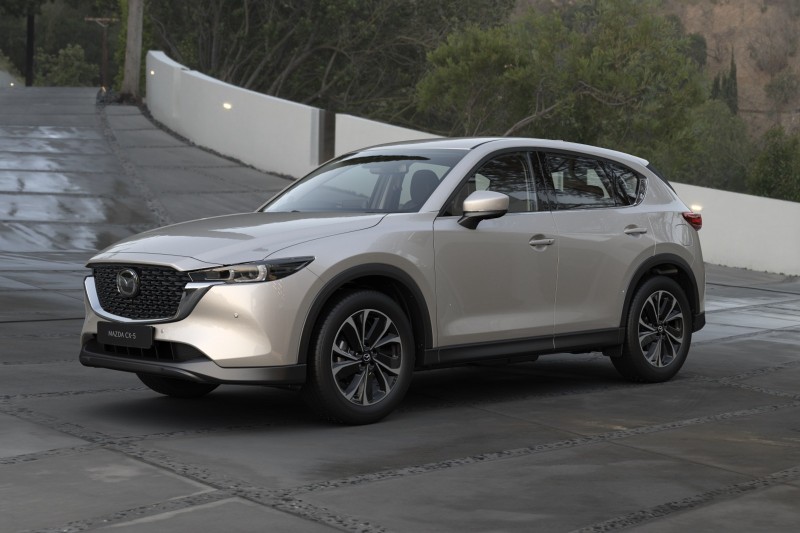
Analysis of the advantages and disadvantages of Mazda CX-5, a SUV that people both love and hate?
LienSep 26, 2024
View More











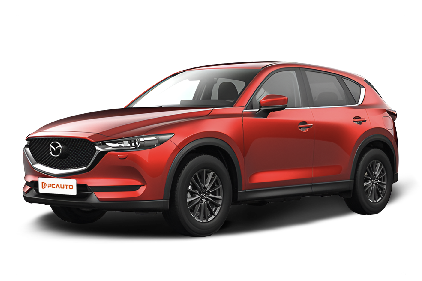





Pros
Cons